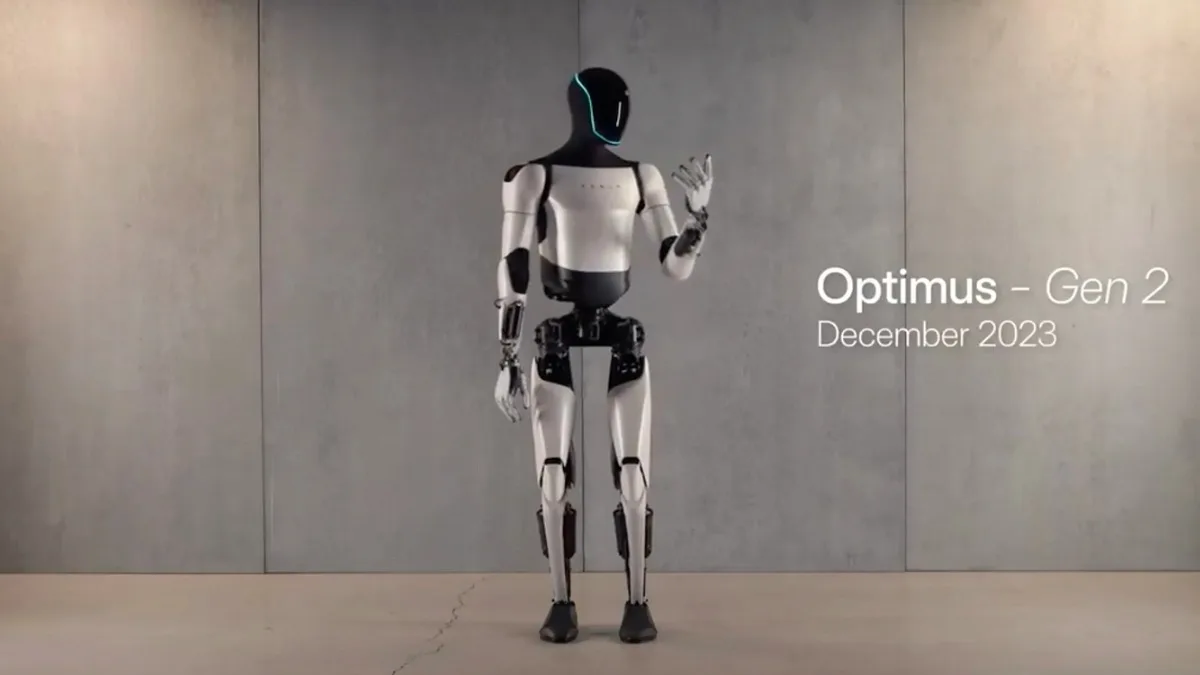Tesla's Optimus Gen-2, a bipedal marvel, strides with improved agility and delicate tasks, poised to redefine humanoid robotics in a burgeoning market.

Tesla Optimus Gen 2 Bipedal Robot
Earlier this week, Tesla Unveiled Optimus Gen-2, the second iteration of its humanoid robot. Described as a general-purpose bipedal robot, Optimus Gen-2 showcases the ability to walk independently, dance, and manipulate physical objects. The robot is positioned as a solution for tasks that are unsafe, repetitive, or monotonous.
Must Read:10 Games To Improve Your Data Science Skills in 2024
Optimus Gen-2 boasts several enhancements over its predecessor, including improved balance and movement, walks 30% faster, weighs 10 kg less, and features greater hand mobility. This marks a substantial evolution from the prototypes introduced at Tesla AI Day 2022, where the robots, Optimus and Bumblebee, displayed limited functionalities.
Must Know:Top 10 Robotics Companies in the World [2024]
In a recent promotional video shared by Elon Musk, Optimus Gen-2 can be seen walking, dancing to music, performing squat thrusts, and perhaps most impressively, picking up and moving an egg without breaking the shell.
Despite the growing capabilities, the official release date and pricing have yet to be confirmed, though Musk has stated that the robot will cost “much less than $20,000” to purchase once it is released. To support the ongoing development, Tesla is actively recruiting talent across various engineering domains.
Must Read:Unitree Robotics H1: World’s Most Powerful Humanoid Robot
Tesla’s Optimus Gen-2 falls within the humanoid robotics market, which Markets and Markets research estimates will grow significantly from a value of $1.8 billion in 2023 to $13.8 billion by 2028., according to Markets and Markets research. The robot’s focus on general-purpose human mobility, especially hand dexterity with 11 degrees of freedom and tactile sensors, distinguishes it in the market.
Must Watch: List of Top 10 Movies On Robotics
Comparisons with other players on the field reveal unique features. Sanctuary AI’s general-purpose Phoenix robot features hands with 20 degrees of freedom and the ability to pick up, place, sort, and stack objects, with demonstrations showing the ability to scan items, solder, place objects in a plastic bag, and serve food. Boston Dynamics’ humanoid robot, Atlas, emphasises explosive movements, lifting, carrying, throwing objects, and navigating environments with parkour-like agility.
Must Know: Top 10 Robotics Companies in USA
Notably, Tesla’s approach differs from humanoid robots like Sophia and Ameca, designed by Hanson Robotics and Engineered Arts, respectively, which prioritise replicating human facial expressions and engaging in face-to-face interactions.
Elon Musk emphasises Tesla’s focus on creating a robot for scalable manufacturing rather than a one-off research project, setting Optimus Gen-2 apart in the rapidly advancing field of humanoid robotics. The article concludes with a glimpse into the potential market positioning and future trajectory of Optimus Gen-2 within the broader landscape of robotic innovations.
Also Read: India’s Top IT companies launched AI upskilling projects for more than 6 lakh employee
This post was last modified on December 24, 2023 2:08 pm
What is digital arrest, and why is it becoming critical in today’s cybercrime-ridden world? This…
AI in Cybersecurity segment: AI has the potential to revolutionize cybersecurity with its ability to…
Explore the best AI security solutions of 2025 designed to protect against modern cyber threats.…
Autonomous agent layers are self-governing AI programs capable of sensing their environment, making decisions, and…
Artificial Intelligence is transforming the cryptocurrency industry by enhancing security, improving predictive analytics, and enabling…
In 2025, Earkick stands out as the best mental health AI chatbot. Offering free, real-time…